Everyone knows cherries are edible. Cherry pits are a little more complicated as people think they contain poisonous cyanide. Today I'm going to share with you what I've learned about them. Through a few historical examples I'll prove that cherry pits aren't poisonous but are actually a traditional almond flavoring that's been used around the world for a very long time.
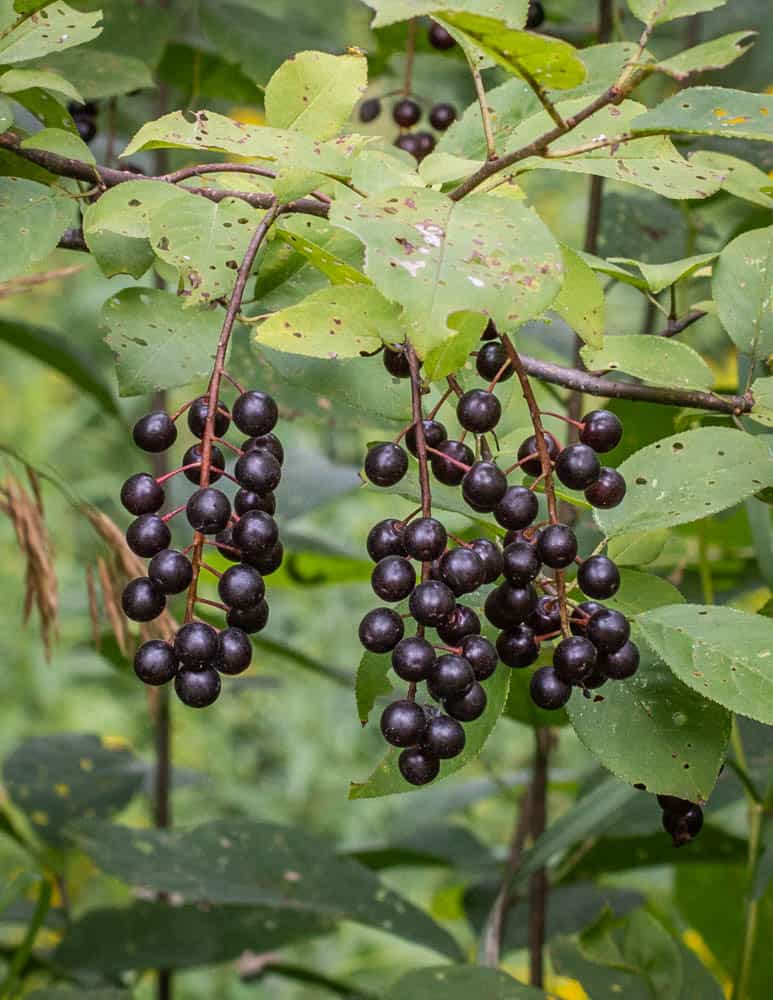
Safety Note (Disclaimer)
The ethnobotanical documentation of wild cherries and their stones being used as a food after drying, cooking and processing is indisputable, as you will see. However, the stones are technically dangerous until they're processed. Do not consume them raw in any form: juiced, pureed, ground, or otherwise. Only recipes instructing you to process the cherries from trusted sources should be used.
Background
I love wild cherries. I crave them and make sure to please the landowners of my favorite patch with whatever I can manage. I didn't always like them though. The first time I harvested them I noticed a row of black cherries (Prunus serotina) growing at one of my favorite disc golf courses during one of my morning forays before work to gather ingredients for my menu.
After a couple hours, I had what I thought must be a great haul of cherries, maybe a gallon. I brought them into the kitchen, washed them up, put them in a pot with water just barely up to the top. I simmered them for a while, then mashed and strained the juice, for a sauce for the duck on my menu.
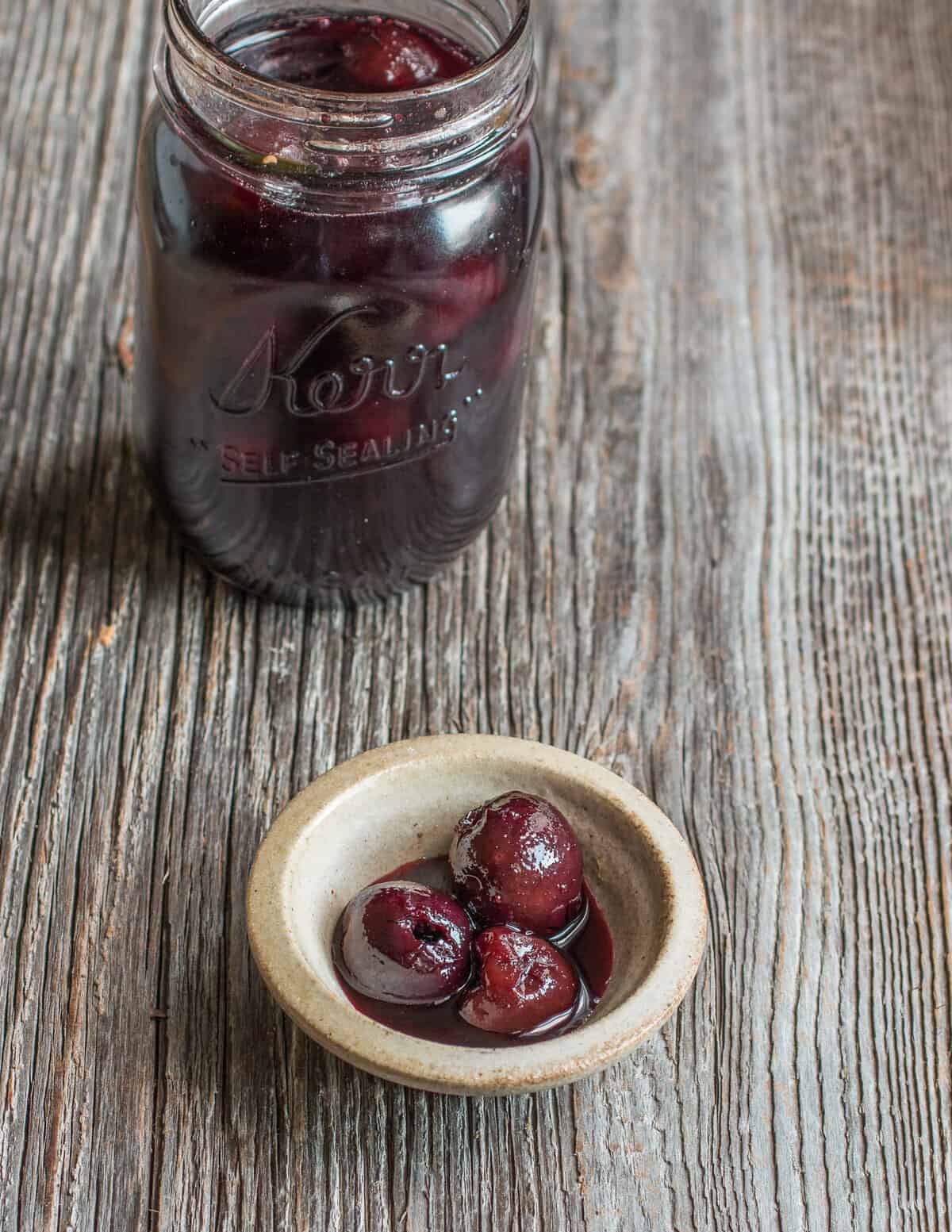
The cherry sauce was ok, after I cooked it with brandy, duck demi-glace, and instructed my cooks to mount it with plenty of butter, but I couldn't help but stare at the large amount of stones leftover.
I remember thinking that it was a waste of time. All that work for a little juice! I'll just buy some nice Bings. Had I known what I do now, I would have done things a lot differently. I would have paid anyone I could find for their wild cherries.

Sidenote: I have one friend who, extolling the virtues of a certain cake to me, told me that he had removed the flesh from individual black cherries to make the filling for the cake.
I'm a fan of many things most day-walkers might call tedious (acorns) but I will not be removing the flesh from wild cherries by hand.
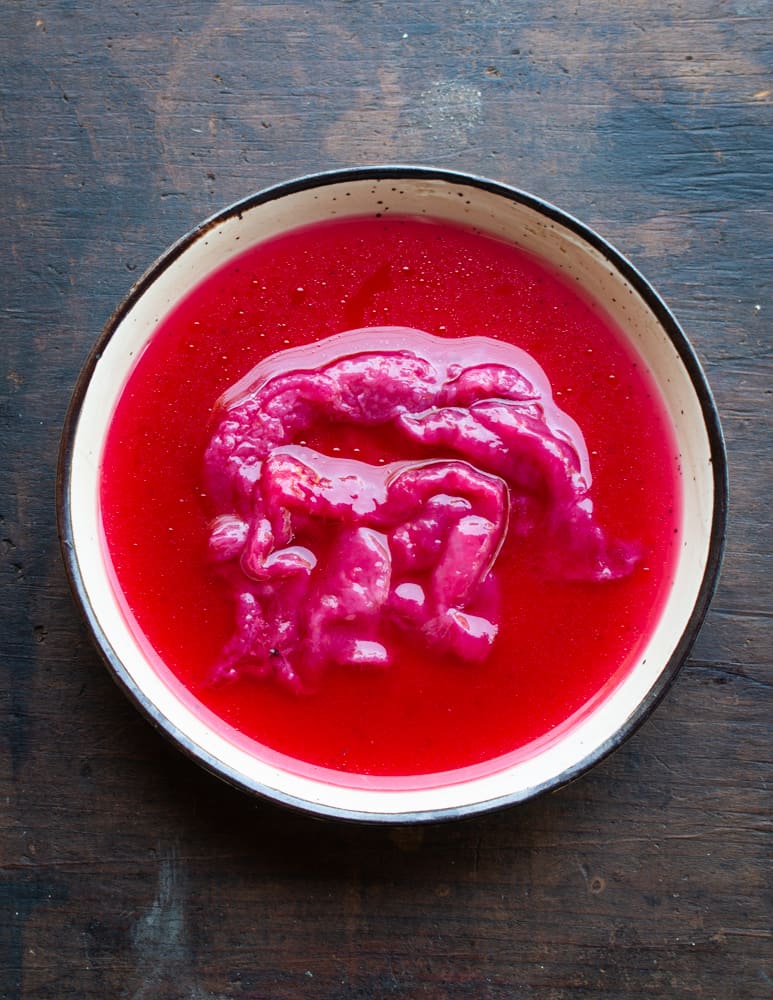
As I wrote my book, well, after I scrapped the first manuscript and started over, I noticed a few things as I was working on the fruit chapter (90% of which got cut). When I turned to wild cherries, I tried to find as many historical and cultural preparations for them as I could could, and I noticed something really interesting.
I found not one, not two, but three different traditions from around the globe that had found ways to use the specific wild cherries of their region in their entirety: flesh, stone and all (although not necessarily together for some products like noyeaux and mahlab.)
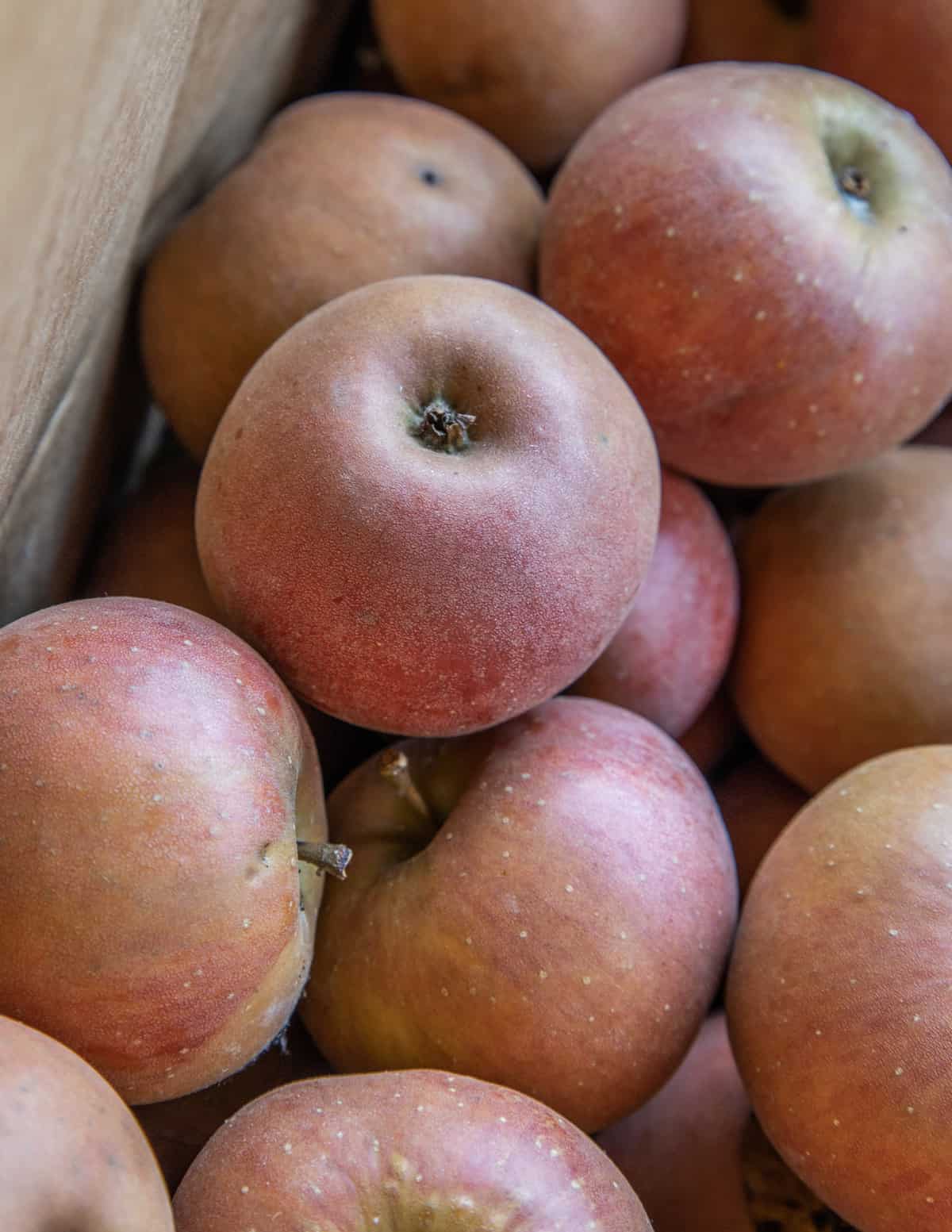
Cherries and Cyanide
I was confused as I'd always thought that cherry stones are poisonous, along with plums kernels, peaches, and apricots. Essentially they are, but they're also edible after processing and used as a traditional seasoning.
Cooking with cherry pits specifically has been a huge inspiration for me, and the flavor they give to things is incredible. Just don't eat them raw.
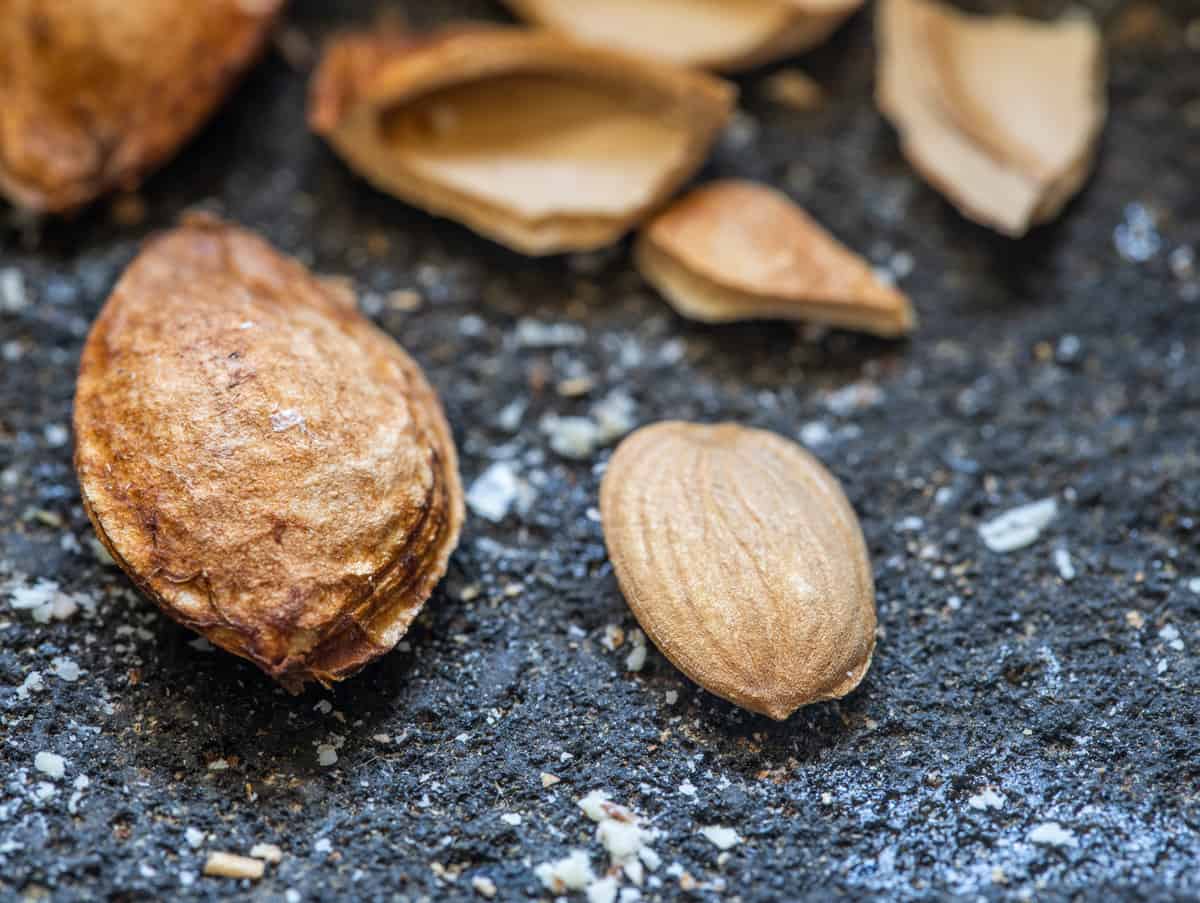
Amygdalin
If you're unfamiliar, here's the commonly held notions and facts about cherries (and other stone fruits).
The kernels inside the shells or pits, contain amygdalin, a compound that (long story short) the human body converts into cyanide after consuming if the shells containing the kernel are ruptured. This seems pretty simple. Don't eat stone fruit pits, right? Here's where it gets interesting.
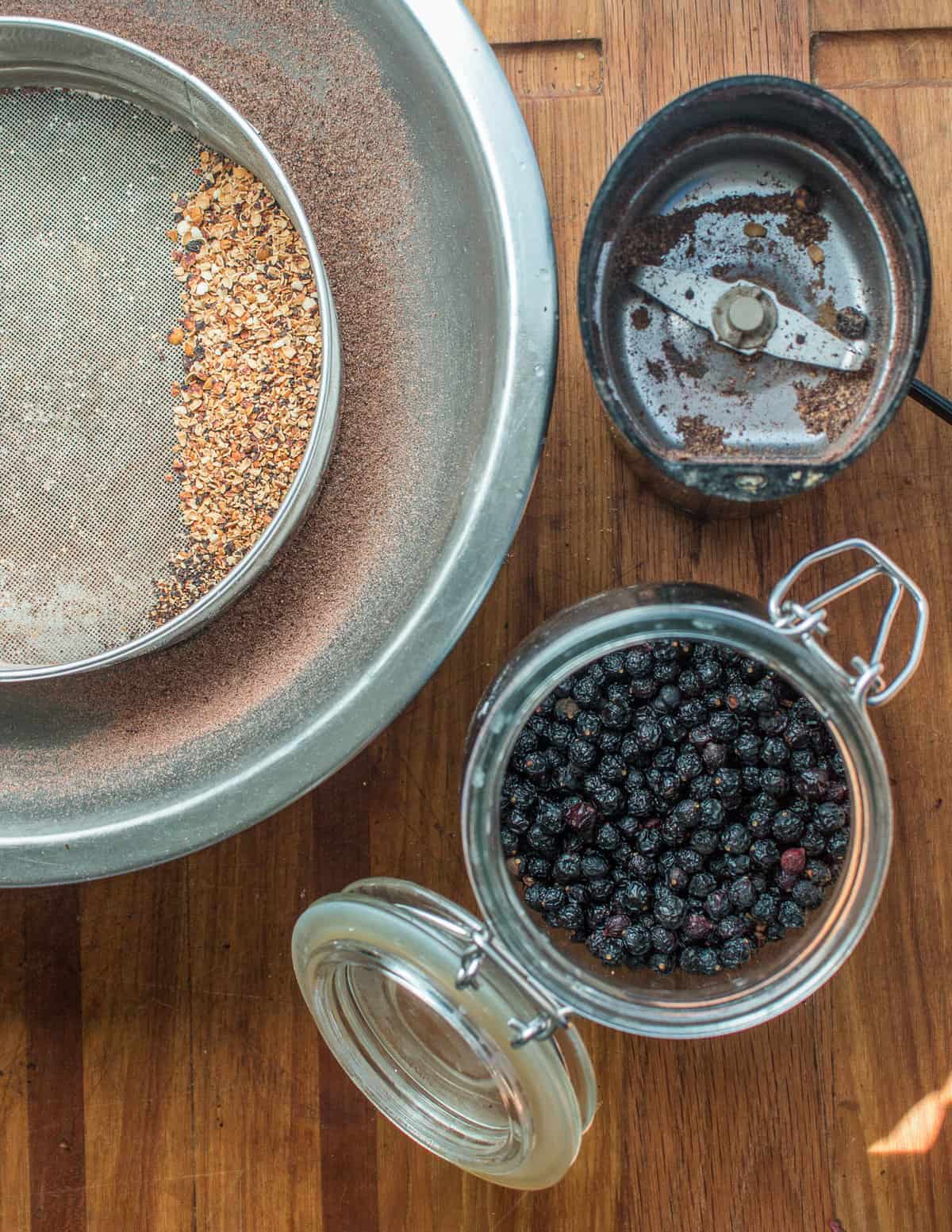
The stones and seeds of many plants in the Rose family (Rosaceae), besides containing amygdalin in various concentrations, also have an intense flavor of almond, a flavor that cultures around the world have enjoyed and harnessed for culinary purposes for ages, using them to flavor everything from breads and pastries, to liquors, sauces and, even meat dishes.
They key to unlocking the almond flavor, without worrying about the effects of cyanide poisoning, is cooking and/or other types of processing such as drying. They are never consumed raw. Here's a list of a few products from around the world that I know of. If you have any to add, I'd love to hear about them.
Culinary products made with cherry and prunus stones
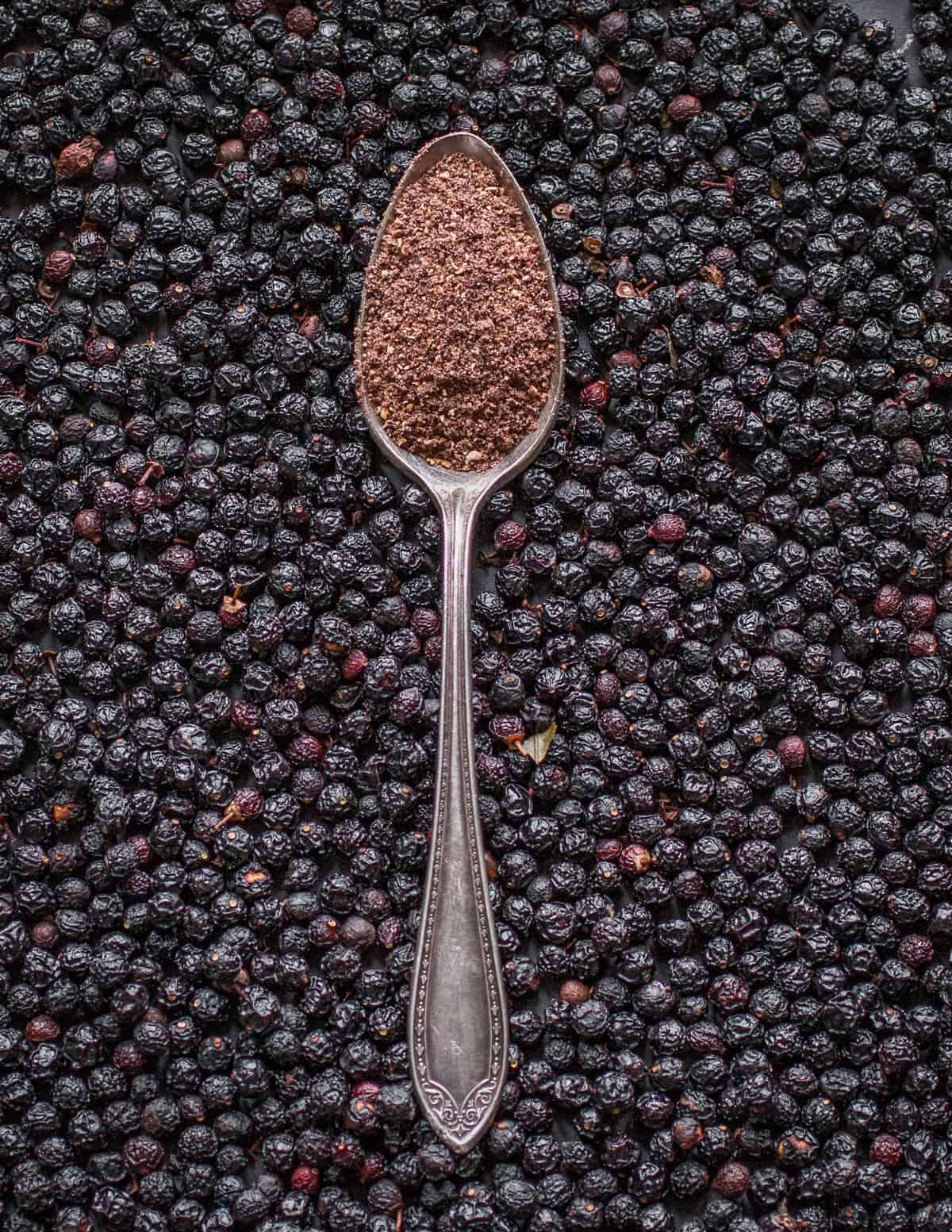
Mahlab
Named for the species of cherry it comes from, (Prunus mahlab), also known as mahlepi, is the kernel, and only the kernel, of the cherry, sans shell. It's dried and sold both as a powder (not as desirable as the flavor mellows quickly after grinding) and as the whole kernel.
It's typically used to add an almond flavor to breads and sweets such as Grecian Tsoureki. Use of it seems to be widespread across the middle east and Mediterranean, and I've seen packages labeled in Farsi, Greek, Egyptian, and Hebrew.

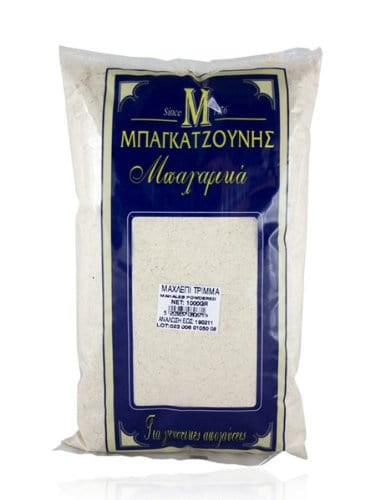
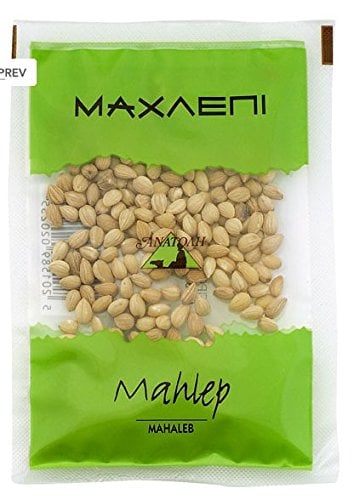
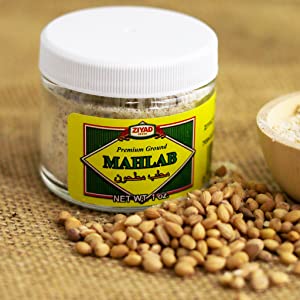
Noyeaux
The most well known French infusion of Prunus kernels is a liquor that can function as a sort of extract for cooking and baking.
Bird Cherry Flour
The Russian incarnation is a flour reminiscent of the dried chokecherry patties of the Indigenous peoples of the American Great Plains in that it contains the entire cherry. To make it, wild cherries are dried whole, then ground to a flour and used for cooking, often after sifting.

Chanpah
On the American Great Plains, indigenous peoples invented the ingenious technique of taking whole wild cherries, crushing them, and making them into patties to dry in the sun. after the patties are dried they're shelf stable, and are reconstituted to make Wojape, the famous fruit sauce.
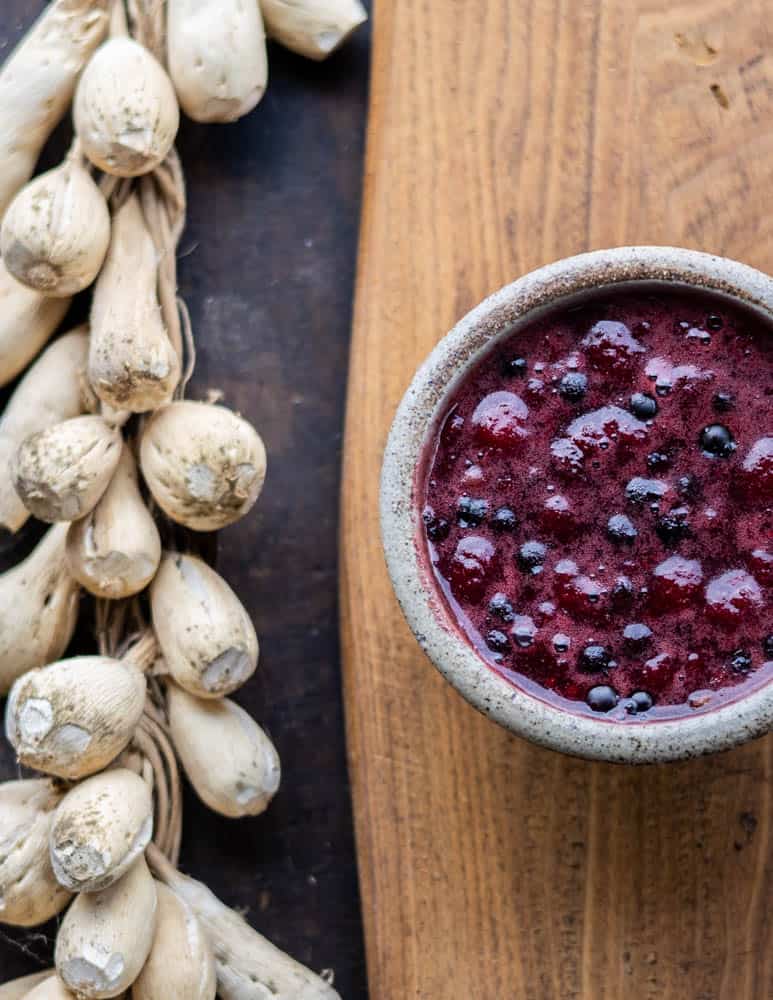
Other examples of harnessing almond flavor without almonds
Amaretto
The almond flavored liquor is typically infused with apricot kernels. In my book I outline a version (it's called wild cherry liquor) made with the leftover crumbs from sifting dried cherries that has a flavor of fruit and almond combined. It's incredibly potent.
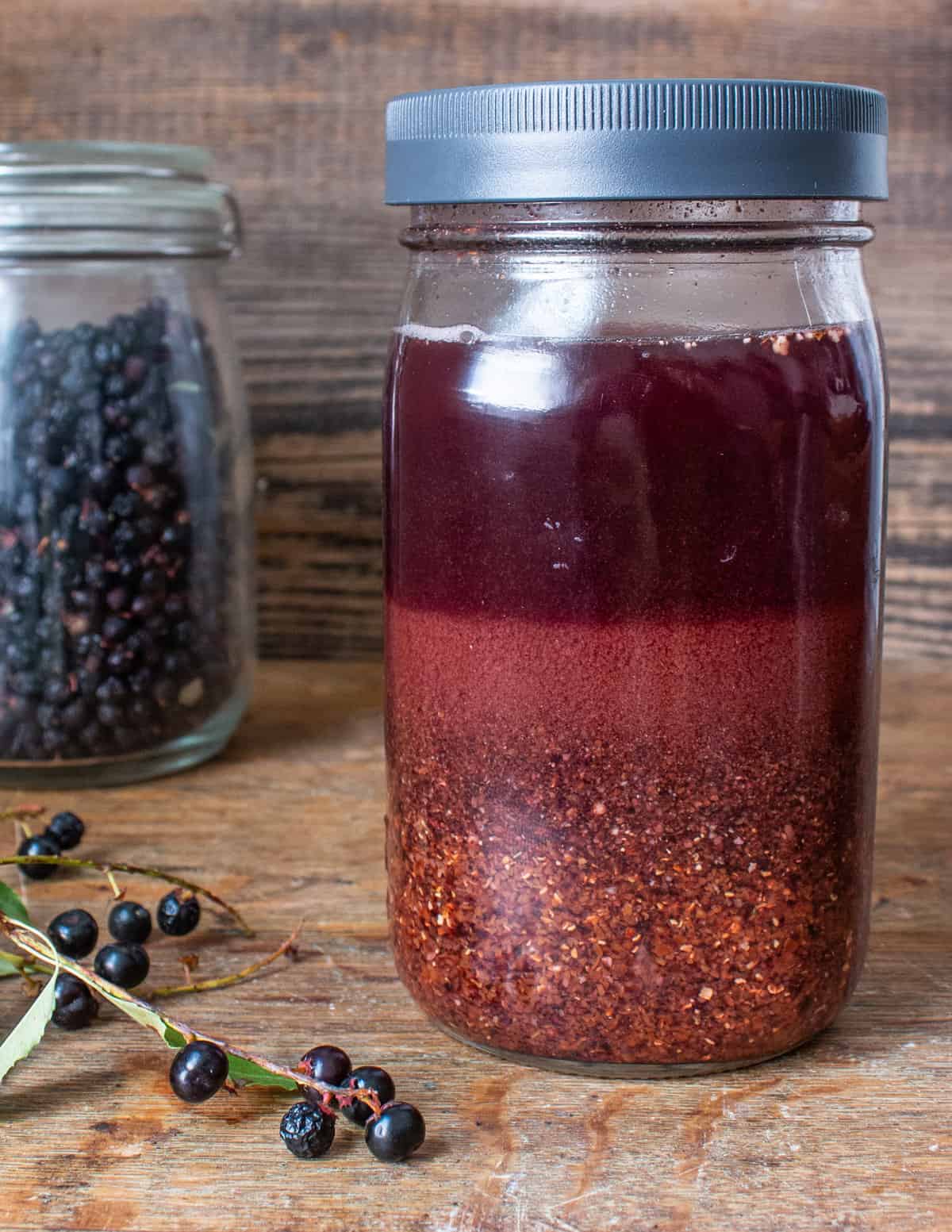
Plum kernel oil
Also known as huile de noyeaux, and huile d’amandons de pruneaux, the latter translating directly to "prune almond oil". Mostly known in chef circles as a boutique finishing oil, plum kernel oil, as you might expect, tastes of almonds.
I would expect that other pits of similar fruits could potentially be oil crops, and I know Sam Thayer has pressed oil from wild plum kernels using his expeller and has reported the same results. It's seems to be mostly marketed as a skin care product.
The meristems of cherry and Rowan trees
A chef friend of mine who cooked in Japan told me that the young, tender growth of cherry trees is pickled in Japan and served, and that they taste of almonds. I cannot confirm or deny that yet, but It's on my list. If you've eaten them, please comment.
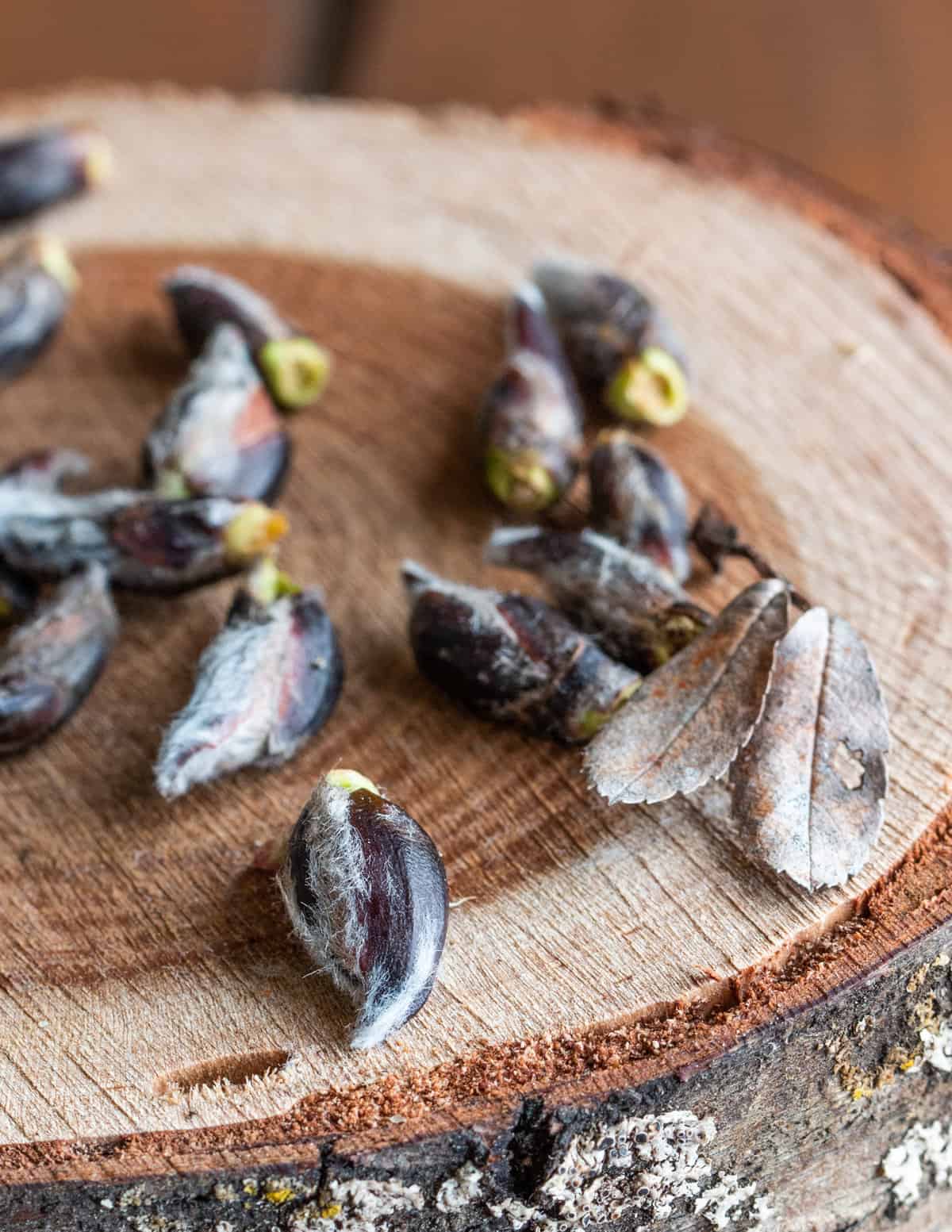
As far as Rowan trees, these are in the Rosaceae too. I've seen these used in culinary preparations cooked as a small vegetable and raw (infused into liquor) and, I've tried it myself. Cooked the flavor of almond isn't noticeable.
As for using them raw for infusions, I cannot recommend them (at least until I know more) as they have not undergone any sort of process of denaturization. If you have an example of how they've been used to harness the almond flavor, or have an account to share regarding their consumption, please comment.
Serviceberry Leather and/or Ferments
Not as well known as any of the other products, serviceberries are in the Rosaceae family, and their seeds taste of almond as well. The traditional serviceberry leather described to me by Melissa Price (Sam Thayer's wife) has a noticeable almond flavor, and recently I did a talk to a Canadian brewing group where one of the members asked me why a serviceberry liquor tasted so strongly of almond.
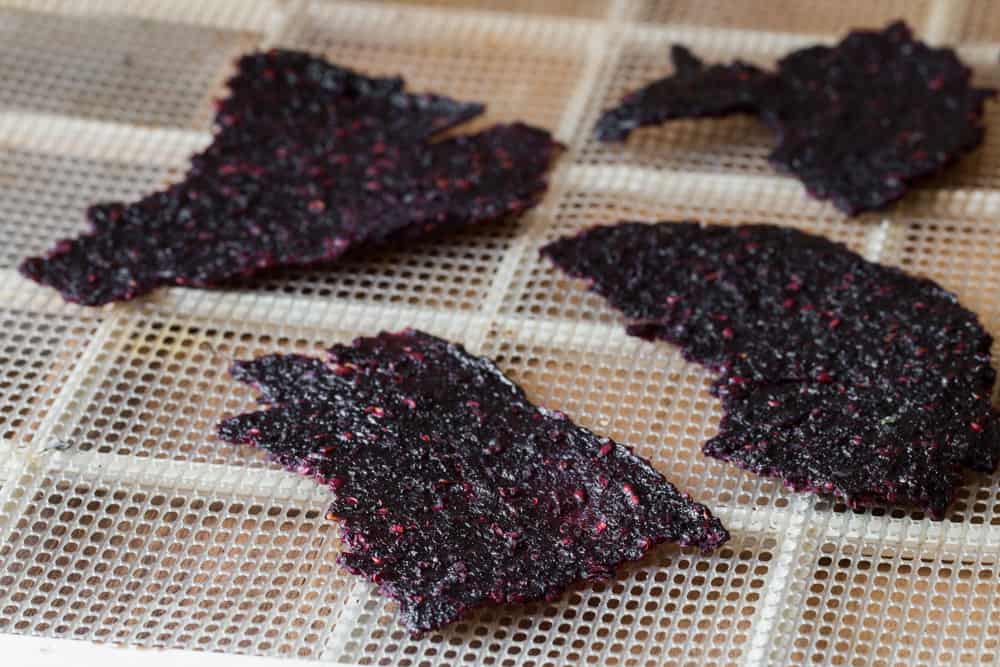

Bo
have you ever worked with hawthorn seeds in this manner before? got a lot of common hawthorn around me and apparently they have a similar seed-to-pulp ratio
Alan Bergo
Hey Bo, I haven't, but I've eaten the young shoots, in tiny amounts. You could try, my assumption is it wouldn't be as strong but I could be wrong.
Anya
Cherry pits DO contain cyanide but it's not enough to harm a human unless eaten in large quantities just like apple seeds. So while they're not really harmful to humans they are still poisonous and you should definitely make sure you're eating safe amounts.
Alan Bergo
The fact they contain cyanide isn’t being brought into question here.
Audrey
Hello Mr Bergo,
First, I am a french speaker from province of Quebec, in Canada, and I'm not exactly fluent in english. Then, excuse me if I make errors in how I write.
I want to try a patties recipe with chokecherries, and I read your article about the chokecherries' pits. Are you sure that if I dry them, they will lose their toxicity? Have you some references about the process used to detoxify the pits?
Thank you in advance!
Audrey Desbiens, from Saint-Félicien, Lac St-Jean (in North!)
Alan Bergo
Hi Audrey. There is a lack of scientific documentation on the process, but a decent amount of ethnobotanical refernces. My friend Linda Black Elk, a Native American ethnobotanist did work to test the toxicity of the patties specifically, you could reach out to her on Instagram. One of the best examples I have is actually a product. Siberian bird cherry flour is made from whole cherries dried and ground into a sifted powder for baking, including the cherry pits. It is so well known you can actually buy the product on Amazon. It is the heat, and combination of drying and cooking after the shells have been broken and exposed to air that denatures the cyanide.
Hannah Breckbill
We just pitted a bunch of tart cherries and left the pits in a Tupperware of water, lots of fermentation happened, and now they smell soooo good! Do you think it's safe to use this vinegar, or would the cyanide have leached out?
Alan Bergo
Hi Hannah. As I describe in the post, it is heating the cherry stones and drying them that helps make them safe. Whatever you use them for, they must go through a drying or heat treatment first to be safe.
Heather
Bummer!! I pitted a bunch of sour cherries and saved the pits; I put the pits in a jar, covered with filtered water, tied a double cloth over and let sit on counter for four days till lightly carbonated and refreshing. I love this drink, but I just started wondering if there was any danger of cyanide poisoning from preparing it with raw unprocessed pits. Now I know.
Alan Bergo
It might be ok if the pits aren't cracked but it's better safe than sorry here. I got an email a while back from someone that pureed raw wild cherries whole in a vita mix with water, strained and drank the liquid raw, then had the gall to email me saying I am misleading people when they got cyanide poisoning.
Jaimi
I have a large Evan’s cherry tree in my back yard. I was making stewed cherries and used an immersion blender thinking it would speed up the process of getting the pits away from the flesh, but it blended the pits. I boiled the mixture, strained twice in cheese cloth and am left with juice. I’m thinking the juice is safe now since it was boiled and strained ?
Alan Bergo
If it has been brought to a boil I might make jelly if it tastes good. I would be hesitant to drink it as a beverage all alone.
Serena Kidder
Thank you so much for sharing this information. I had made Chokecherry jelly, and then was reading that if one had cut the pits in a blender they were poisonous. Obviously I was nervous about putting it in pbjs for my babies. So yay! We can eat it (I cooked them in water before I blended them, strained them through a jelly bag, and am water bathing it as a jelly)
Alan Bergo
Hey thanks Serena, glad it could be helpful.
Sama Cunningham
Hi Alan!
Thanks so much for another great article. You really make cooking with foraged food a practical and accessible experience - I really can't thank you enough for that! I have a question about making flour from dried cherry pits. I have so far only tried this with the pits (and some of the flesh) of the sour cherries near our house, and after drying the pits and grinding to a flour, it still had a strong bitter taste that made me nervous to use it (including after I tried cooking it at 350 degrees F for a while). I haven't tried with black cherries yet, so I can't tell if the bitter taste is specific to sour cherry pits. Do you know if this bitter taste indicates that the amygdalin has not been sufficiently denatured, or is it possibly just the flavor of that type of cherry pit?
Thanks so much!
Alan Bergo
Hi Sama. All the cherries I've used are a little different, and the small wild cherries have always been the best. The larger cherries I haven't liked as much. If they taste bitter I'd try using them to make extract as I outline in my book, or just skip them. Also note that for most of the preparations I am using the whole cherry including the flesh, which adds a ton of flavor esp with the smaller wild species.
Sama Cunningham
Thanks Alan, I did actually end up making an extract with them, and it turned out really well. That’s good to know, that cherries will vary and that you’ve had more success with the smaller ones. I certainly plan on gathering a lot of black cherries this August! Thanks again for the advice.